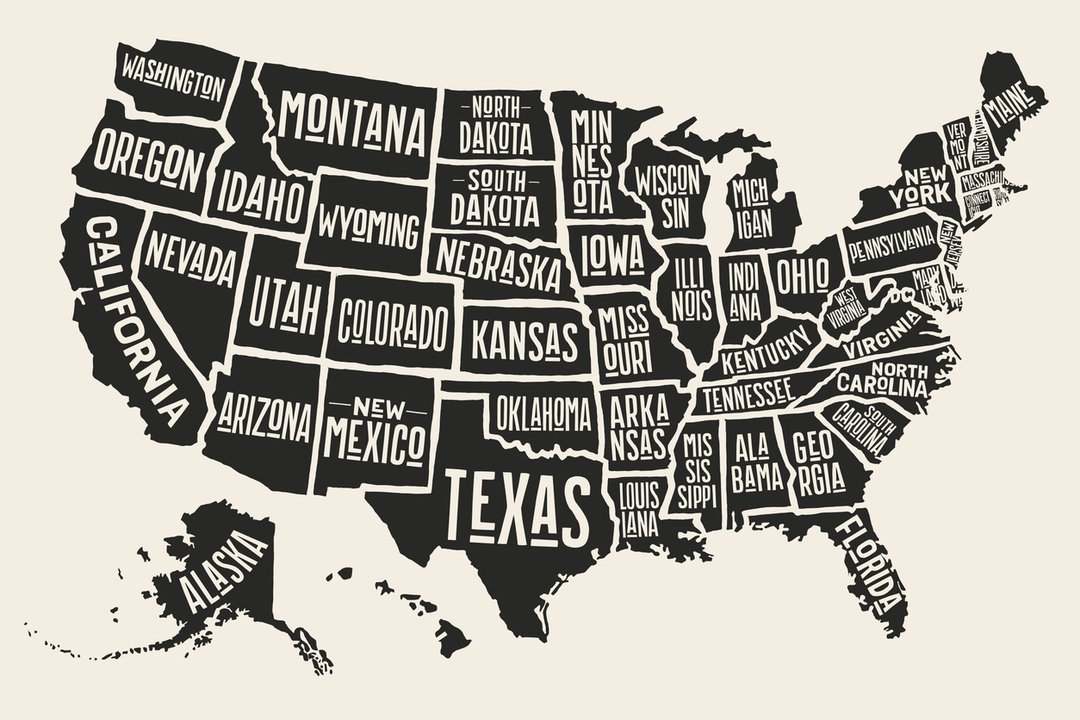
By Jean Folger
Oct. 18, 2024
Key Takeaways
- The most expensive states to retire in shared low relative affordability rankings and high tax rates.
- Some of the most expensive states levy taxes on (or don't offer tax credits for) Social Security and retirement income.
- Retirees who move to some of these states may also be on the hook for estate tax.

iStock image
More than half of all Americans—55%—are concerned that they won't be able to achieve a financially secure retirement, according to a study from the National Institute on Retirement Security.1 Furthermore, a 2024 AARP survey found that 20% of adults aged 50+ have no retirement savings at all.2
These studies support what many Americans already know: Most of us are financially unprepared for retirement. Some future retirees consider moving to an area with a lower cost of living and access to affordable healthcare.
But where to go? We looked at data from Bankrate’s “Best and Worst States to Retire" 2024 list and combined it with the Tax Foundation's state tax burden ranking for 2022 to determine which states are the most expensive.34 We considered each state’s cost-of-living rank and tax-rate rank. From our analysis, we found six states that appeared in the top ten in both categories, making them the priciest options for retirement overall. Here's the roster, starting with the most expensive state.
New York
- Affordability rank: 494
- Tax rate rank: 503
- State individual income tax: 4.0% to 10.9%5
- State sales tax: 4.0% (average combined state and local sales tax of 4.53%)6
- Estate/inheritance tax: Yes/No7
Although New York doesn't have the highest cost of living in the U.S., the state’s 15.9% total tax burden for 2022 is well above the national average. In fact, it's the highest in the country.3
The state collected $3,573 per capita in state and local taxes in 2022 (the highest amount in the country), and state and local governments collected about $3,359 per capita in property taxes.8
California
- Affordability rank: 504
- Tax rate rank: 463
- State individual income tax: 1.0% to 13.3%5
- State sales tax: 7.25%6
- Estate/inheritance tax: No/No7
California has the highest cost of living and ranks fourth in tax rates. The top tax rate for individual income is 13.3%, the highest among states that impose an individual income tax.5 Its 2022 tax burden is 13.5%, and the state collected $3,743 per capita in state and local taxes (the first on the list).9
State and local governments collect about $2,100 per person for property taxes.10 The state sales tax is 7.25% (the highest among the states mentioned here), and the combined rate in special city/county taxing districts can be as high as 8.85%.6 Although Social Security and Railroad Retirement benefits are exempt from taxes in California, all other sources of retirement income are fully taxed.11
Connecticut
- Affordability rank: 434
- Tax rate rank: 493
- State individual income tax: 2.0% to 6.99%5
- State sales tax: 6.35% (7.75% for certain luxury items)12
- Estate/inheritance tax: Yes/No7
Connecticut is the seventh most expensive state in terms of cost of living. Its 2022 tax burden of 15.4% ranks the second highest in the nation, and the state collected $2,845 per capita in state and local taxes. Property tax collections amount to about $3,292 per capita (the fourth highest in the country).13
Connecticut offers no exemptions or tax credits for most pensions or other retirement income—including Social Security benefits (unless the taxpayers have a federal adjusted gross income of less than $75,000 or less than $100,000 for married taxpayers filing jointly). The exceptions are Railroad Retirement benefits and military pensions, which are both excluded from taxes.14
Vermont
- Affordability rank: 424
- Tax rate rank: 473
- State individual income tax: 3.35% to 8.75%5
- State sales tax: 6.0% (average combined state and local sales taxes of 6.36%)6
- Estate/inheritance tax: Yes/No7
Vermont has the eighth-highest cost of living and the third-highest tax rate. Its 2022 tax burden is 13.6%, and it collected $1,906 per capita in state and local taxes (12th in the rank). Property tax collections amount to about $2,991 per capita (fifth in the rank).15
Vermont taxes most retirement income at ordinary income tax rates, including Social Security benefits, which are taxed up to 85% (in sync with the federal rate) of benefits.16 Railroad Retirement benefits are exempt.17
New Jersey
- Affordability rank: 404
- Tax rate rank: 453
- State individual income tax: 1.4% to 10.75%5
- State sales tax: 6.625%6
- Estate/inheritance tax: No/Yes7
New Jersey has the tenth-highest cost of living and a tax burden of 13.2% as of 2022.3 The state collected $1,817 per capita in state and local taxes, while property tax collections are about $3,539 per person, the highest on our list.18
Until 2018, New Jersey imposed both an inheritance tax and an estate tax. While close relatives are generally excluded from the inheritance tax, other beneficiaries face tax rates ranging from 11% to 16% on inheritances over $500.19
Note
New Jersey no longer imposes an estate tax for individuals who died on or after Jan. 1, 2018.20
Maine
- Affordability rank: 354
- Tax rate rank: 413
- State individual income tax: 5.8% to 7.15%5
- State sales tax: 5.5%6
- Estate/inheritance tax: Yes/No7
Maine is the fifteenth most expensive state to live in, with the ninth-highest tax rate (a tax burden of 12.4% as of 2022).3 The state collected $1,499 per capita in state and local taxes (24th in the rank), while property tax collections amounted to $2,821 per capita (sixth in the rank).21
While there is no inheritance tax, the estate tax rates in Maine range from 8% to 12%. The tax applies to estates worth more than $6.8 million as of the 2024 tax year.722 While Maine does not tax Social Security income, other forms of retirement income are taxed at rates as high as 7.15%.23
Frequently Asked Questions
What Is the Most Cost-Effective State To Retire In?
Considering affordability rankings and state-local tax burdens, some of the most cost-effective states for retirement include Georgia, Tennessee, and Wyoming.4,3 However, your individual circumstances will impact how the cost of living affects your budget.
What Is the No. 1 Retirement State?
The most popular states among people of retirement age include California, Florida, Texas, Maine, and West Virginia.
Where Can I Retire in the U.S. on $2,000 per Month?
Although options are limited for retirees on limited budgets, there are places in the U.S. where you can retire and live on $2,000 per month. According to 2024 research from SeniorLiving.org, these areas include Uniontown, PA., Cedar Rapids, IA, and Freeport, IL.24
The Bottom Line
Several states have tried to make their tax systems more appealing to retirees. Maine, for example, boosted the amount of pension income you can exclude from state taxes, and Nebraska has phased out taxation of Social Security income.2526 The federal exclusion for estate tax is $13.61 million in 2024.27
Whether you are concerned with making your money last longer during retirement or leaving more assets to your children, the local cost of living and tax rate may be an important consideration during retirement. Not that non-financial factors—your interests, hobbies, comfort, health, and proximity to friends and family—aren't important when choosing a retirement destination. Just bear in mind that wherever you retire (be it in place, in another state, or abroad) can have a considerable impact on your finances.
Article Sources
Investopedia requires writers to use primary sources to support their work. These include white papers, government data, original reporting, and interviews with industry experts. We also reference original research from other reputable publishers where appropriate. You can learn more about the standards we follow in producing accurate, unbiased content in our editorial policy.
- National Institute on Retirement Security. "Retirement Insecurity 2024: Americans’ Views of Retirement." Page 1.
- AARP. "AARP Financial Security Trends Survey, January 2024."
- Tax Foundation. "State and Local Tax Burdens, Calendar Year 2022."
- Bankrate. "The Best and Worst States for Retirement 2024."
- Tax Foundation. "State Individual Income Tax Rates and Brackets, 2024."
- Tax Foundation. "State and Local Sales Tax Rates, 2024."
- Tax Foundation. "Estate and Inheritance Taxes by State, 2023."
- Tax Foundation. "Taxes in New York."
- Tax Foundation. "Taxes in California."
- Tax Foundation. "Facts & Figures 2023: How Does Your State Compare?" Select "Table 34. State & Local Property Tax Collections per Capital."
- State of California, Franchise Tax Board. "2023 Instructions for Schedule CA (540) California Adjustments – Residents."
- State of Connecticut, Department of Revenue Services. "Form O-88: Instructions for Form OS-114, Connecticut Sales and Use Tax Return." Page 2.
- Tax Foundation. "Taxes in Connecticut."
- CCH AnswerConnect. "Connecticut, Subtractions—Retirement Plans and Benefits." Select "Explanations."
- Tax Foundation. "Taxes in Vermont."
- State of Vermont, Department of Taxes. "Social Security Exemption."
- State of Vermont, Department of Taxes. "Resident."
- Tax Foundation. "Taxes in New Jersey."
- New Jersey Division of Taxation. "Inheritance and Estate Tax, General Information Brochure."
- New Jersey Division of Taxation. "Inheritance and Estate Tax."
- Tax Foundation. "Taxes in Maine."
- Maine Revenue Services. "Estate Tax (706ME)."
- Maine Revenue Services. "Individual Income Tax FAQ." Select "15. I receive Social Security Benefits; do I qualify for the pension income deduction?"
- SeniorLiving. "10 Places To Retire for $10,000 or Less."
- Nebraska Department of Revenue. "2022 Nebraska Legislative Changes." Select "Income Tax."
- State of Maine, Office of the Governor. "Highlights of the Final Supplemental Budget for FY 2022-2023." Page 1.
- Internal Revenue Service. "Estate Tax."



